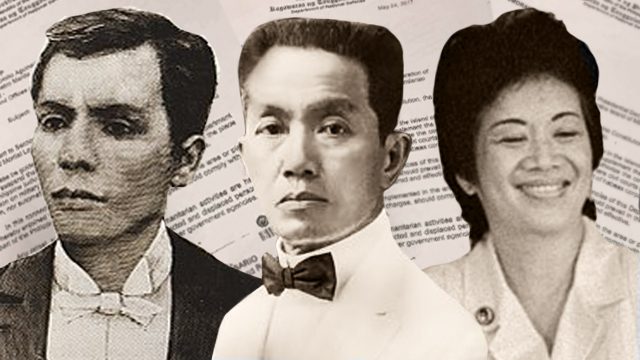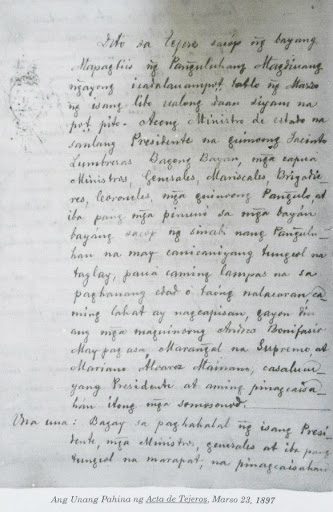SUMMARY
This is AI generated summarization, which may have errors. For context, always refer to the full article.

MANILA, Philippines – For months, President Rodrigo Duterte has floated the idea of a revolutionary government.
Is there basis for a democratically elected president to declare a revolutionary government?
According to Dante Gatmaytan, professor at University of the Philippines College of Law, “There are no reasons to depart from the constitutional order. That’s the reason why they put in those emergency powers – to deal with everything. There’s really nothing else that we can think of that we did not write in the Constitution.” (READ: Can Duterte declare a revolutionary gov’t? Here’s what you need to know)
Yet for months, the idea has been toyed with. In August, the President said it would take such a measure for the country to “really go up,” but likewise said it would not happen under his watch.
A few months later, Duterte said he would declare a revolutionary government if he sensed destabilization plots would escalate. His latest word on the matter saw him pulling back on the threat, saying he would not use this to crack down on “destabilizers.”
Despite this, supporters of the President continue to urge him to pursue a revolutionary government, with a nationwide show of support slated on November 30, the birth anniversary Filipino revolutionary Andres Bonifacio.
A revolutionary government had been declared only twice in Philippine history. Why was it declared and what did it look like?
Philippine Revolution

From 1896 to 1898, the discovery of the Katipunan led to the outbreak of the Philippine revolution with key moments taking place during the 1897 Tejeros convention and 1898 declaration of a revolutionary government.
The country’s existence as an independent nation served as basis to establish a revolutionary government. A national revolution took place to overthrow a centuries-long colonizer, as well as several threats to our nation’s independence.
The 1897 Tejeros convention saw the Magdiwang and Magdalo factions of the Katipunan come together to elect leaders for the revolutionary government. The meeting is the first known election in the country’s history, although it ended with a feud between Andres Bonifacio and Daniel Tirona, with the former declaring the events tarnished by trickery in his “Acta de Tejeros.”
Despite this, elected officers of the Magdalo took their oath of office at a meeting in Santa Cruz de Malabon the following night, according to the National Historical Commission of the Philippines.
Another key moment of the revolution took place on June 12, 1898, when Emilio Aguinaldo proclaimed Philippine Independence as he waved the Philippine flag for the first time from the window of his house in Kawit, Cavite.
A few days later, Aguinaldo issued decrees that would establish a dictatorial government to address the peace and order situation of the Philippines. On June 18, 1898, he would issue another decree, officially instituting a revolutionary government to fight for the independence of the Philippines.
Revolutionary government of Cory Aquino
Under former president Corazon Aquino, a revolutionary government was established to reinstate, in the shortest time possible, the democracy that was halted when former president Ferdinand Marcos declared Martial Law.
A revolutionary government was established with the signing of the “Freedom Constitution” promulgated under Proclamation No. 3.
WHEREAS, the direct mandate of the people as manifested by their extraordinary action demands the complete reorganization of the government, restoration of democracy, protection of basic rights, rebuilding of confidence in the entire government system, eradication of graft and corruption, restoration of peace and order, maintenance of the supremacy of civilian authority over the military, and the transition to government under a New Constitution in the shortest time possible
Recent reports showed Duterte alluding to Aquino’s revolutionary government.
But according to Aries Arugay, associate professor of political science at the University of the Philippines, it should be noted that a revolutionary government was instituted to reinstate democracy.
“She wanted to reinstate the democracy that was halted when Marcos declared Martial Law. In a way, her assumption of power could be revolutionary, but that would not be embarking on revolutionary change. Because what happened, the outcome, is that the previous (democracy) was restored,” Arugay said.
Duterte mentioned destabilization threats as among the reasons for considering a revolutionary government. Recently, the President announced plans to issue a proclamation tagging communist rebels as “terrorists.”
Arugay added that along with this, threats to national security and political stability are tagged as motivations when speaking of the possibility of a revolutionary government.
“The threat of a revolutionary government is to somehow signal to possible threats to national security and political stability because you will not just sit down and receive all these threats. He’s willing to use the power that he currently possesses, whether that is within the Constitution or not,” said Arugay.
Despite Duterte’s reference to the revolutionary government of Aquino, Gatmaytan said any declaration of such a government at this time would be far different.
“He has no valid basis. Aquino’s rise to power was very fast and came from a dictatorship… We have to understand that Duterte’s revolutionary government is going to disregard everything because it’s constraining. But that’s the reason why we have the government, that’s the reason why we have the Constitution, precisely to constrain government actions,” he said. – Rappler.com
Add a comment
How does this make you feel?
There are no comments yet. Add your comment to start the conversation.